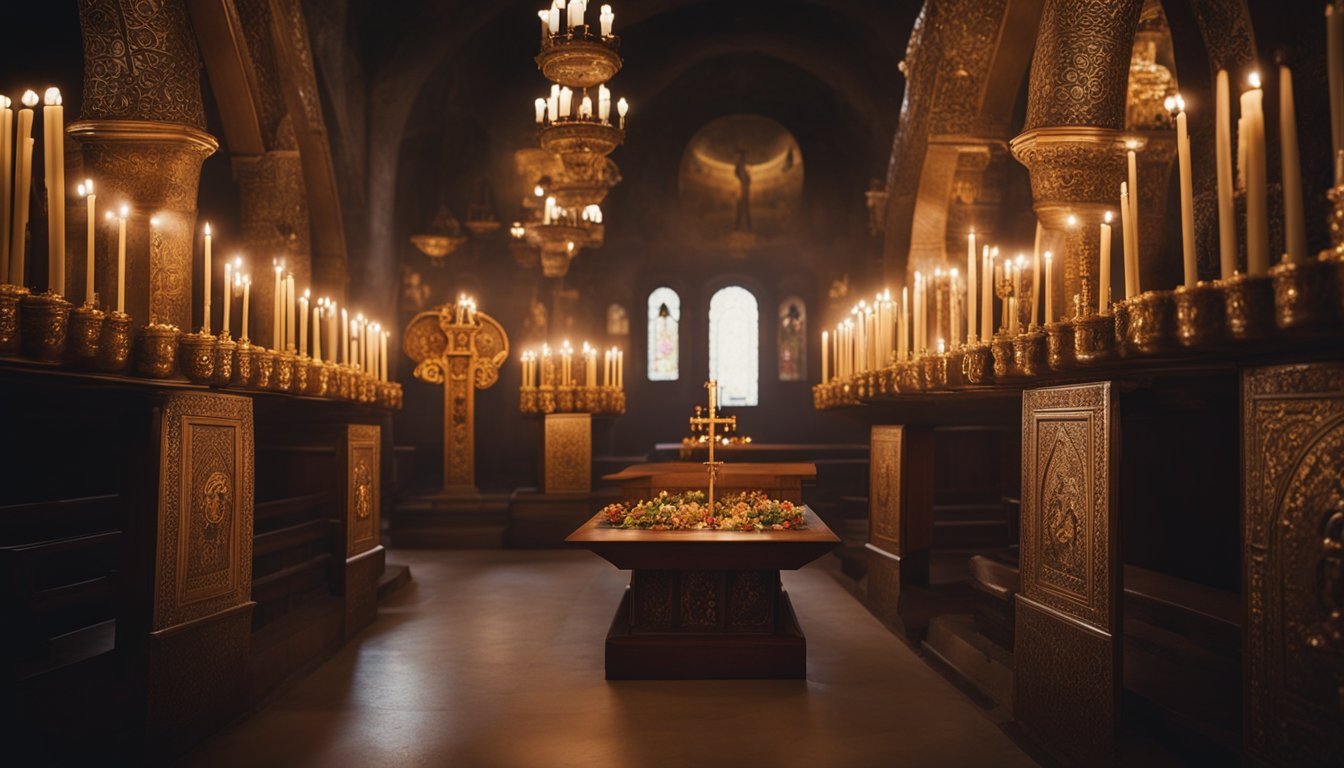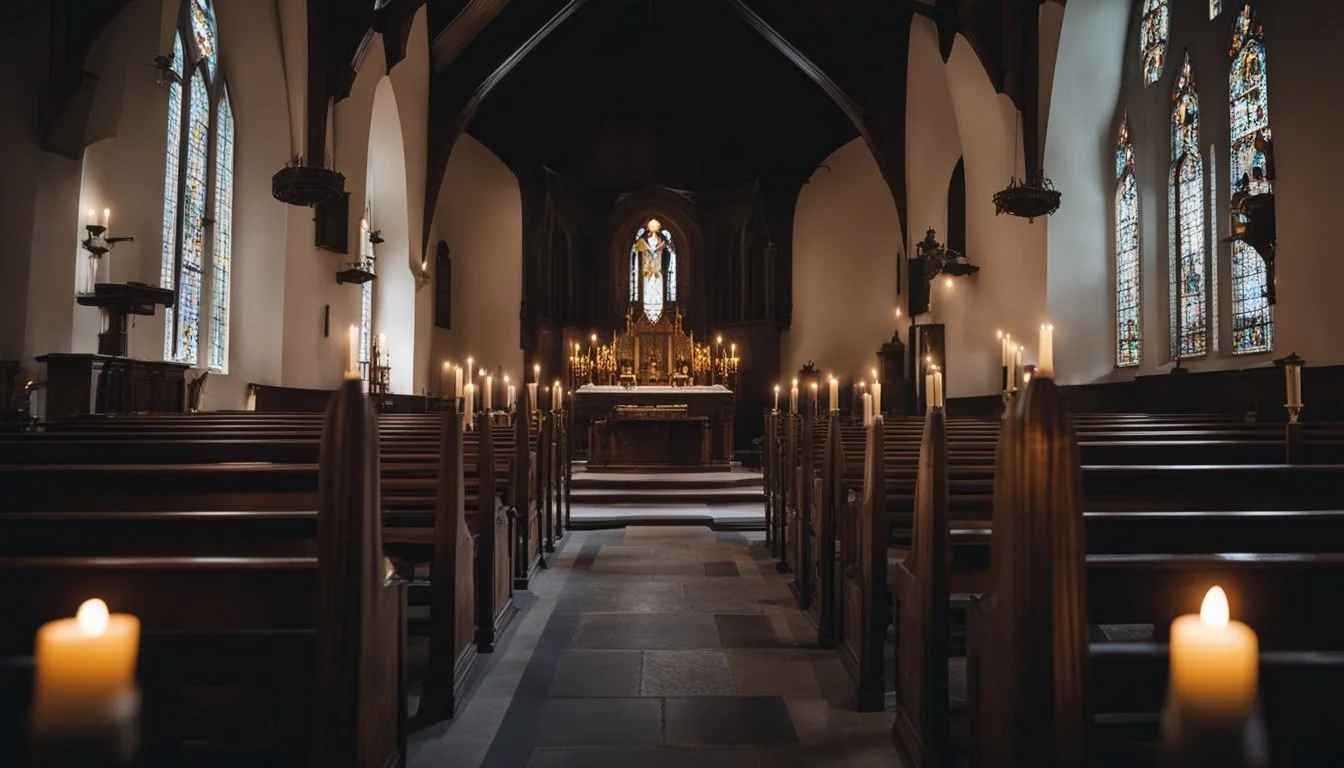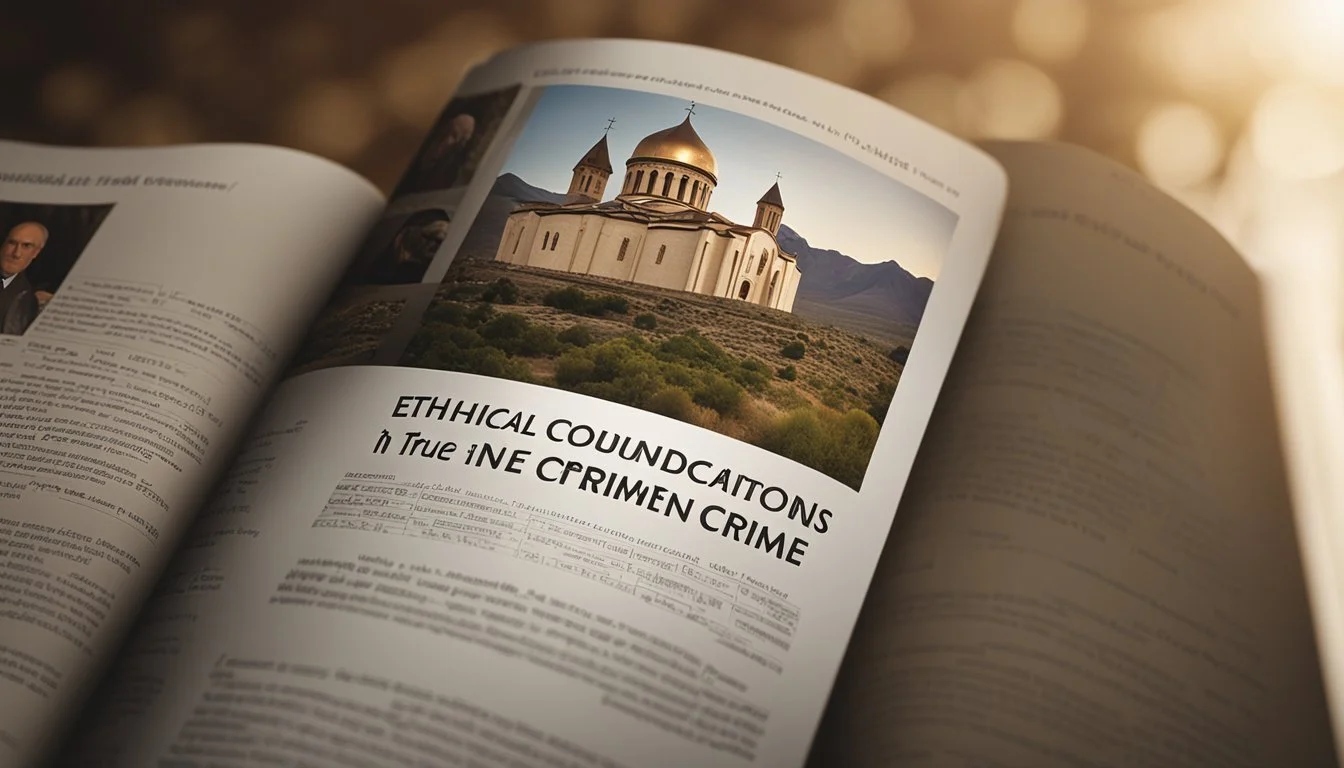5 True Crime Documentaries About Armenian Apostolic Churches You Need to Watch
True crime documentaries shed light on significant and often dark realities within various communities. The Armenian Apostolic Churches, with their rich history and deep cultural roots, have also been touched by episodes that have attracted the attention of documentary filmmakers. These films not only explore these gripping stories but also delve into the broader social and historical implications surrounding the Armenian Apostolic Churches.
Understanding the intersection of faith and crime within these communities provides a unique glimpse into the resilience and challenges faced by their members. By examining these documentaries, viewers gain insight into the complexities and sometimes tragic events that have impacted these religious communities, making it essential to acknowledge and discuss these narratives.
1) "Holy Vigil" by Alexander Ghazarian (2022)
"Holy Vigil," directed by Alexander Ghazarian, explores a chilling series of events within the Armenian Apostolic Church. The documentary delves into the aftermath of a mysterious crime that shook the faithful community.
Through compelling interviews and archival footage, Ghazarian paints a vivid picture of the investigation.
Witnesses recount unsettling encounters and inexplicable phenomena. The documentary follows the journey of an investigative journalist aiming to uncover hidden truths while navigating complex church politics and age-old traditions.
Ghazarian's methodical approach and storytelling engage viewers, offering a detailed look into the dark side of faith institutions. The film highlights both the reverence and the controversy surrounding the events.
Many viewers find "Holy Vigil" both fascinating and informative, portraying a seldom-discussed aspect of religious communities. For more information on the film, visit IMDB.
2) "Faith and Mystery: The Gregorian Chronicles" by Mikael Hovhannisyan (2018)
"Faith and Mystery: The Gregorian Chronicles" explores the enigmatic history of Armenian Apostolic churches. Mikael Hovhannisyan meticulously investigates a series of unsolved crimes within these sacred institutions.
With carefully structured interviews and archival footage, the documentary sheds light on lesser-known aspects of church activities.
It delves into the complex relationship between religion and local communities. By presenting various case studies, Hovhannisyan highlights the persistent threads of faith amid controversies.
For further details, visit IMDb.
3) "Echoes of Truth: The Untold Story of Armenian Churches" (2022)
"Echoes of Truth: The Untold Story of Armenian Churches" delves into the hidden narratives of the Armenian Apostolic Churches. This documentary captures the rich history and cultural significance of these institutions. The filmmakers skillfully navigate through the stories of these ancient edifices, shedding light on their spiritual and architectural marvels.
The documentary features interviews with historians, church leaders, and congregants who share their perspectives on the church's role over the centuries. Breathtaking visuals of the churches and surrounding landscapes provide a compelling backdrop to the spoken narratives.
One notable aspect of the film is its focus on the resilience and dedication of the Armenian people in preserving their religious heritage. This aspect is explored through personal anecdotes and archival footage.
The production team also addresses issues of preservation and restoration efforts. This gives viewers insight into the challenges faced in maintaining these historic structures. Overall, "Echoes of Truth: The Untold Story of Armenian Churches" offers an informative and visually stunning exploration of an important aspect of Armenian culture.
For more information, visit IMDb.
4) "Secrets of the Sacred: Inside Armenian Apostolic Churches" (2021)
"Secrets of the Sacred: Inside Armenian Apostolic Churches" is a 2021 documentary that takes viewers into the mysterious world of the Armenian Apostolic Church.
The film explores the deep historical roots and significance of these places of worship. It provides an inside look at the lesser-known rituals and ceremonies that define their religious practices.
Through expert interviews and archival footage, the documentary sheds light on the preservation of ancient traditions. More information on IMDb.
5) "Divine Intrigue: The Haunting Stories of Faith" (2021)
"Divine Intrigue: The Haunting Stories of Faith" uncovers unsettling tales within the Armenian Apostolic Church.
The documentary delves into mysterious occurrences and unexplained phenomena. These stories are intertwined with faith and belief.
Directed by acclaimed filmmaker Arsen Hayk, it provides a gripping exploration.
For more information, visit Wikipedia.
Historical Context of Armenian Apostolic Churches
The Armenian Apostolic Church holds a unique place in Armenia's history, representing both religious and cultural heritage. Its origins and contributions to Armenian society are significant, with deep historical roots and ongoing influence.
Origins and Development
The Armenian Apostolic Church traces its beginnings to the apostles Bartholomew and Thaddeus in the first century. According to tradition, they preached Christianity in Armenia, laying the foundation of the church.
In 301 AD, Armenia became the first nation to adopt Christianity as the state religion. This was under the leadership of Saint Gregory the Illuminator and King Tiridates III. The establishment of the church as the state religion marked a pivotal moment in Armenian history.
Saint Gregory played a crucial role in institutionalizing the church. He founded a network of monasteries and churches, which served as centers of education and worship. The church developed a distinct liturgical tradition, heavily influenced by early Christian and regional practices.
Throughout the centuries, the Armenian Apostolic Church has faced numerous challenges, including invasions and political upheavals. Despite these, it has maintained its continuity and doctrinal purity, significantly shaping Armenian identity.
Role in Armenian Culture
The church has been a cornerstone of Armenian culture, playing a key role in preserving language, literature, and arts. It served not just as a religious entity but also as an educational and social institution.
During medieval times, monasteries were centers for manuscript production, preserving Armenian texts and contributing to world heritage. Monks and priests were often scholars, linguists, and historians.
The church's influence extends to national celebrations and customs. Religious festivals and liturgies have intertwined with cultural traditions, reinforcing communal bonds.
Architecturally, Armenian churches are notable for their unique style. They feature intricate stone carvings, domed structures, and cross-stones known as khachkars. Many of these architectural elements have symbolic meanings rooted in Armenian theology and history.
The Armenian Apostolic Church's role in preserving Armenian identity, especially during foreign dominations and diaspora, cannot be overstated. It remains a central part of Armenian life and continues to adapt to contemporary challenges while upholding its rich heritage.
Impact of True Crime on Armenian Apostolic Communities
The portrayal of crimes in or around Armenian Apostolic Churches has significant consequences for the community. It influences how the broader public perceives these communities and affects the internal solidarity and response of church members.
Community Reactions
Armenian Apostolic communities often react to true crime narratives with a blend of concern and resilience. Such portrayals can lead to increased vigilance within church congregations and a strengthened commitment to supporting victims.
In some cases, community members may organize groups to discuss safety measures or hold vigils and prayer sessions in response to crime-related events.
This collective response aims to heal emotional wounds and bolster community morale.
Morale: Strengthened by collective action and support
Safety Measures: Enhanced by community-organized discussions
Media Representation
The media's portrayal of true crime within Armenian Apostolic contexts impacts public perception. Accurate and empathetic reporting can raise awareness and elicit broader societal support. Conversely, sensationalistic coverage might perpetuate stereotypes and incite unwarranted fear or prejudice.
Accurate depictions ensure that the challenges faced by these communities are understood without bias. Misrepresentations, however, can deepen divides and lead to misinformed judgments.
Key Considerations: Accuracy and empathy
Potential Effects: Awareness versus prejudice
Balanced media representation is crucial for fostering understanding and support.
Ethical Considerations in True Crime Documentaries
True crime documentaries often raise numerous ethical questions. This genre draws attention to real events and people, which can complicate the line between storytelling and exploitation.
Impact on Victims and Their Families
Highlighting violent crimes can retraumatize victims or their families. Documentaries should approach their stories with sensitivity, ensuring that they do not sensationalize suffering.
Consent and Representation
Obtaining consent from those involved is crucial. Filmmakers must ensure that all participants fully understand how they will be portrayed. Ethical representation means avoiding misleading edits or taking comments out of context.
Bias and Objectivity
Documentaries should strive for unbiased, fact-based presentations. Avoiding preconceived narratives and allowing the evidence to guide the story can maintain integrity and trustworthiness.
Privacy Concerns
Respecting privacy is essential. Exposing personal details or private moments without consent can cause significant harm. Filmmakers should balance the public's right to know with individuals' rights to privacy.
Responsible Filmmaking
Adhering to ethical standards in storytelling can prevent harm. Responsible filmmakers prioritize the dignity of those affected by the crime over the need for shocking content. They maintain transparency throughout the production process.
True crime documentaries about sensitive topics, such as Armenian Apostolic Churches, must navigate these ethical waters carefully. Balancing the need to inform with respect for those involved ensures that the final product is both compelling and conscientious.
Ethical Filmmaking Practices:
Sensitive Storytelling: Treating subjects with empathy.
Accurate Reporting: Staying true to the facts.
Transparency: Clear communication with participants.








